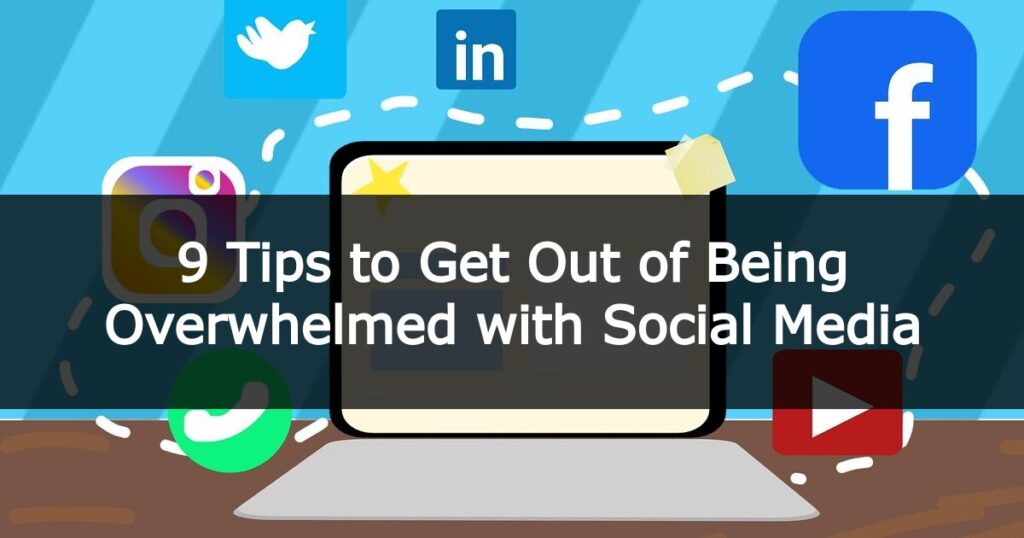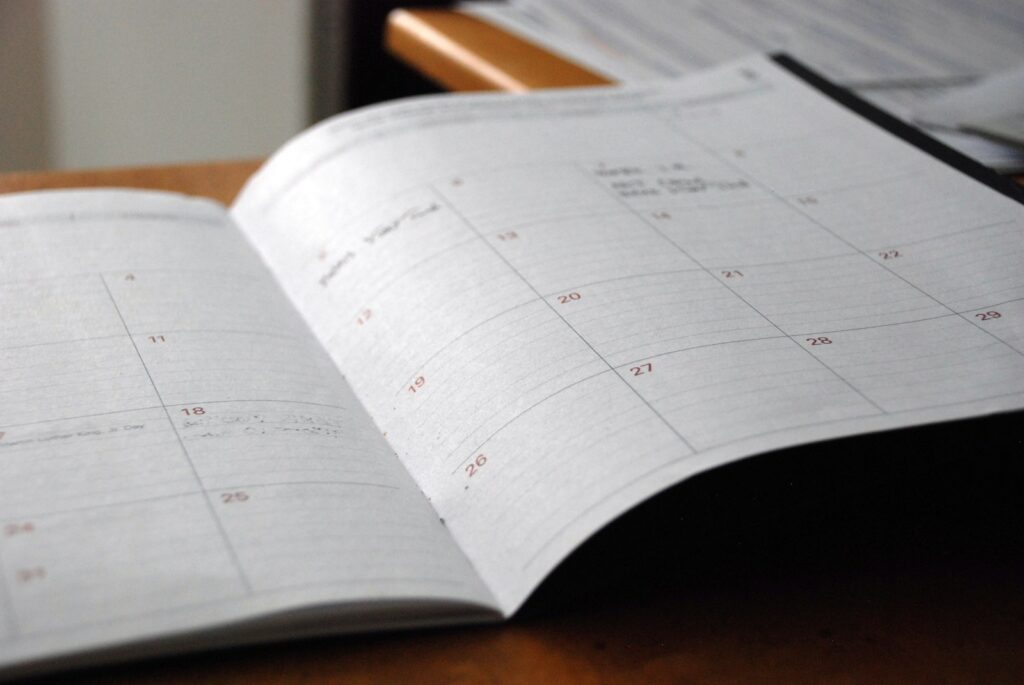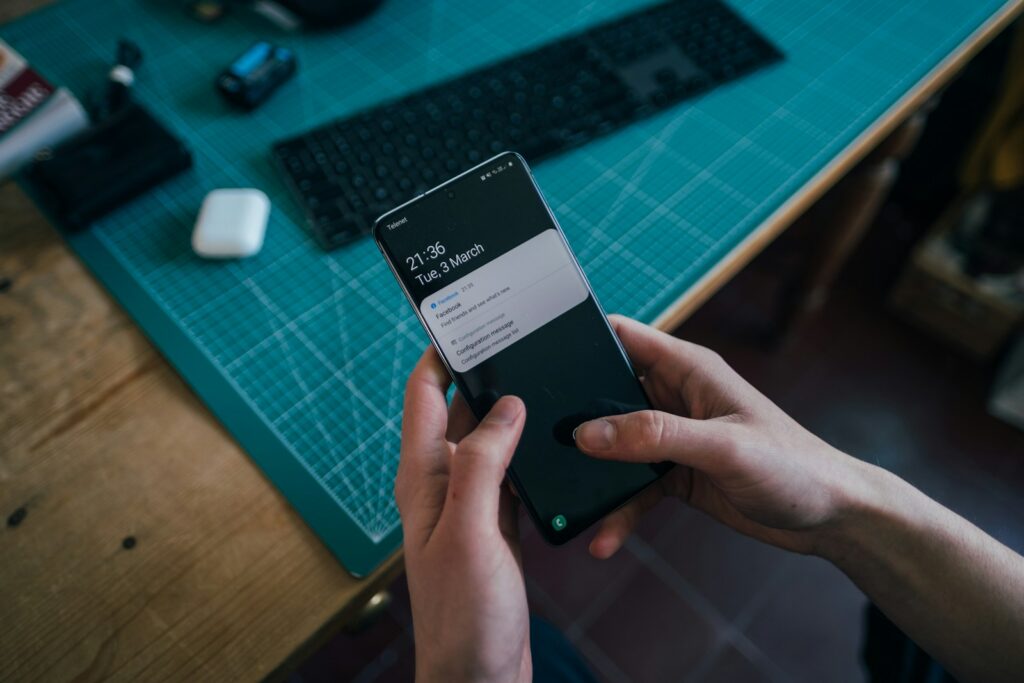Social media has become an undeniable force over the years. It offers incredible opportunities for connection, learning, and entertainment. Yet, for many, the constant influx of information, notifications, and curated realities can lead to a feeling of being utterly overwhelmed. The endless scroll, the fear of missing out (FOMO), and the pressure to present a perfect online persona can take a significant toll on our mental well-being.
If you find yourself feeling drained, anxious, or simply exhausted by your social media usage, know that you’re not alone. The good news is that you *can* regain control and cultivate a healthier relationship with these platforms. Here are nine in-depth strategies to help you break free from the grip of social media overwhelm and reclaim your peace of mind.
9 tips to Get Out of Being Overwhelmed with Social Media

- Conduct a Digital De-clutter: Identify Your Triggers and Purge Ruthlessly
- Implement Strict Time Boundaries: Schedule Your Social Media Interactions
- Turn Off Non-Essential Notifications: Reclaim Your Attention Span
- Be Mindful of Your Consumption: Engage Actively, Not Passively
- Cultivate Real-Life Connections: Prioritize Offline Interactions
- Practice Digital Detoxes: Step Away to Reconnect with Yourself
- Focus on Your “Why”: Align Your Social Media Use with Your Values
- Cultivate Self-Awareness: Recognize Your Emotional Responses
- Seek Support and Be Kind to Yourself: You’re Not Alone in This
Conduct a Digital De-clutter: Identify Your Triggers and Purge Ruthlessly
The first step towards alleviating social media overwhelm is to understand what exactly is contributing to it. Think of your social media accounts as a digital living space. Over time, it’s easy for this space to become cluttered with accounts you no longer engage with, individuals who evoke negative emotions, and groups that no longer serve your interests. A digital declutter involves a thorough audit of your social media landscape and a ruthless purging of anything that doesn’t bring you genuine value or joy.
Start by going through your following lists on each platform. Ask yourself honest questions about each account:
- Does this account inspire me, educate me, or genuinely entertain me?
- Do I consistently feel positive or neutral after seeing their posts?
- Does this account align with my current interests and values?
- Am I engaging with their content in a meaningful way, or am I just passively scrolling?
- Does this account trigger feelings of inadequacy, comparison, or anxiety?
If the answer to the last question is a resounding “yes,” or if you find yourself consistently skipping their content without a second thought, it’s time to hit that unfollow button. Don’t hesitate to be selective. Remember, you are curating your digital environment, and you have the right to choose what you consume.
Beyond individual accounts, consider the groups and pages you’ve joined. Are they still relevant to your life? Do they contribute positively to your online experience? If not, leave them. Similarly, review the apps you have installed on your phone. Are there social media platforms you rarely use but still receive notifications from? Consider uninstalling them to reduce the temptation to check them mindlessly.
This digital de-cluttering process might feel time-consuming initially, but the long-term benefits are significant. By consciously curating your feed, you’ll reduce the noise and create a more intentional and positive social media experience.
Implement Strict Time Boundaries: Schedule Your Social Media Interactions
One of the biggest contributors to social media overwhelm is the feeling of being “always on.” The constant stream of notifications and the perceived need to stay updated can lead to endless scrolling and a blurring of boundaries between our online and offline lives. To combat this, it’s crucial to establish strict time boundaries for your social media interactions.
Instead of checking your phone every few minutes out of habit, designate specific times throughout the day for social media. This could be a 15-20 minute break in the morning, a short period during your lunch break, and another brief window in the evening. The key is to be intentional about when you engage with these platforms rather than letting them constantly interrupt your day.
Utilize your phone’s built-in features or third-party apps to set time limits for specific social media apps. When your allocated time is up, the app will notify you, helping you to stay accountable. Resist the urge to override these limits initially; treat them as important appointments you wouldn’t typically miss.
Furthermore, establish “social media-free zones” and “social media-free times.” This could mean no phone usage in the bedroom, during meals, or during quality time with loved ones. Creating these boundaries helps you to be more present in your offline life and reduces the constant pull of social media.
Initially, adhering to these time boundaries might feel challenging. You might experience a sense of FOMO or the urge to check your notifications. However, with consistent practice, you’ll start to feel more in control of your time and less reliant on the constant validation and stimulation that social media can provide.
Turn Off Non-Essential Notifications: Reclaim Your Attention Span
The incessant pinging and buzzing of notifications are a major source of distraction and contribute significantly to social media overwhelm. Every notification pulls your attention away from what you’re doing, disrupting your focus and creating a sense of urgency that often isn’t warranted.
Take back control of your attention by turning off all non-essential notifications from your social media apps. Be selective about what truly requires your immediate attention. For instance, you might choose to receive notifications for direct messages from close friends and family, but disable alerts for likes, comments, shares, or suggested followers.
Go into the notification settings of each app and customize them according to your preferences. You might be surprised by how many types of notifications you’ve unknowingly allowed. By minimizing these interruptions, you’ll create more space for focused work, meaningful conversations, and simply being present in the moment.
Turning off notifications might initially make you feel like you’re missing out. However, you’ll quickly realize that most of what happens on social media can wait until you intentionally choose to check it during your designated time slots. This simple act can significantly reduce feelings of anxiety and the constant pressure to stay updated.
Be Mindful of Your Consumption: Engage Actively, Not Passively
The endless scroll often leads to passive consumption, where we absorb vast amounts of information without truly engaging with it. This can leave us feeling drained, unfulfilled, and even contribute to feelings of comparison and inadequacy as we scroll through curated highlight reels.
Shift your approach from passive consumption to active engagement. When you do choose to spend time on social media, be intentional about what you’re looking at and how you’re interacting with it. Instead of mindlessly scrolling, actively seek out content that aligns with your interests, educates you, or brings you joy.
Engage with posts in a meaningful way. Leave thoughtful comments, share content that resonates with you, and connect with people you genuinely care about. This active participation can make your social media experience feel more fulfilling and less like a time-wasting void.
Be aware of how different types of content make you feel. If certain topics or accounts consistently trigger negative emotions, make a conscious effort to limit your exposure to them. Pay attention to the time you’re spending on each platform and what you’re getting out of it. If you find yourself feeling worse after spending time on social media, it’s a clear sign that you need to adjust your consumption habits.
Cultivate Real-Life Connections: Prioritize Offline Interactions
Social media, at its best, can be a tool for connecting with others. However, it’s crucial to remember that these online interactions should complement, not replace, meaningful real-life connections. When we become overly reliant on social media for our social needs, it can lead to feelings of isolation and loneliness, despite being constantly “connected” online.
Make a conscious effort to prioritize face-to-face interactions with friends and family. Schedule regular meetups, engage in meaningful conversations, and nurture your offline relationships. These real-world connections provide a deeper sense of belonging, support, and fulfillment that social media often cannot replicate.
When you’re spending time with loved ones, be present and put your phone away. Resist the urge to constantly check notifications or document every moment for social media. Focus on the connection you’re building in the real world.
Investing in your offline relationships can significantly reduce your reliance on social media for social validation and connection, thereby lessening feelings of overwhelm and loneliness.
Practice Digital Detoxes: Step Away to Reconnect with Yourself
Just like any other form of overindulgence, taking breaks from social media is essential for your mental well-being. Regular digital detoxes allow you to disconnect from the constant stimulation and noise of the online world and reconnect with yourself and your surroundings.
Schedule regular periods where you intentionally abstain from social media. This could be for a few hours each day, a full day each week, or even a longer period like a weekend or a week. During your digital detox, engage in activities that nourish your mind and body, such as reading, spending time in nature, exercising, pursuing hobbies, or simply enjoying moments of quiet solitude.
The initial days of a digital detox might feel uncomfortable, as you may experience the urge to check your phone out of habit. However, as you persist, you’ll likely find a sense of liberation and increased mental clarity. You might notice that you have more time for other activities, feel less anxious, and are more present in your offline interactions.
Digital detoxes don’t have to be extreme. Start with small, manageable periods and gradually increase the duration as you become more comfortable. The key is to make them a regular practice to help you maintain a healthy balance between your online and offline lives.
Focus on Your “Why”: Align Your Social Media Use with Your Values
Why are you using social media in the first place? Understanding your motivations can help you use these platforms more intentionally and avoid getting sucked into mindless scrolling. Are you using it to connect with loved ones, learn new skills, stay informed about specific topics, or promote your work?
Once you identify your “why,” evaluate whether your current social media usage aligns with these goals. Are you spending your time on activities that actually contribute to your objectives, or are you getting sidetracked by irrelevant content and distractions?
Be intentional about the accounts you follow and the content you consume. Seek out individuals and pages that provide value and align with your interests. Unfollow or mute accounts that don’t contribute to your “why” or that distract you from your goals.
By focusing on your purpose for using social media, you can filter out the noise and create a more meaningful and less overwhelming online experience. You’ll be less likely to get caught up in comparisons or the pressure to conform to online trends if you’re clear about what you want to get out of these platforms.
Cultivate Self-Awareness: Recognize Your Emotional Responses
Pay attention to how different types of social media content make you feel. Do certain posts trigger feelings of envy, anxiety, or inadequacy? Are you spending excessive time comparing yourself to others’ seemingly perfect lives?
Developing self-awareness around your emotional responses to social media is crucial for managing overwhelm. When you notice yourself feeling negative after engaging with certain content, take a step back and reflect on why. Identifying your triggers allows you to make conscious choices about what you consume and who you follow.
Consider keeping a journal to track your social media usage and your emotional state afterward. This can help you identify patterns and gain a better understanding of how these platforms are impacting your well-being.
Once you’re more aware of your emotional responses, you can proactively limit your exposure to content that negatively affects you. This might involve unfollowing certain accounts, muting specific keywords, or simply being more mindful of how you’re feeling while scrolling.
Seek Support and Be Kind to Yourself: You’re Not Alone in This
Dealing with social media overwhelm is a common experience in today’s digital age. Don’t hesitate to reach out to friends, family, or even a therapist if you’re struggling to manage your relationship with social media. Talking about your experiences and challenges can provide valuable support and perspective.
Remember that the curated realities presented on social media are often just a small, carefully selected snapshot of people’s lives. Don’t compare your behind-the-scenes to someone else’s highlight reel. Be kind to yourself and acknowledge that it’s okay to feel overwhelmed by the constant influx of information and the pressure to maintain an online presence.
Making changes to your social media habits takes time and effort. Be patient with yourself and celebrate small victories along the way. It’s not about completely abandoning social media, but rather about cultivating a healthier and more balanced relationship with these powerful tools. By implementing these nine strategies, you can take back control of your digital life and escape the overwhelming grip of the endless scroll, paving the way for greater peace, focus, and well-being.




Leave a Reply